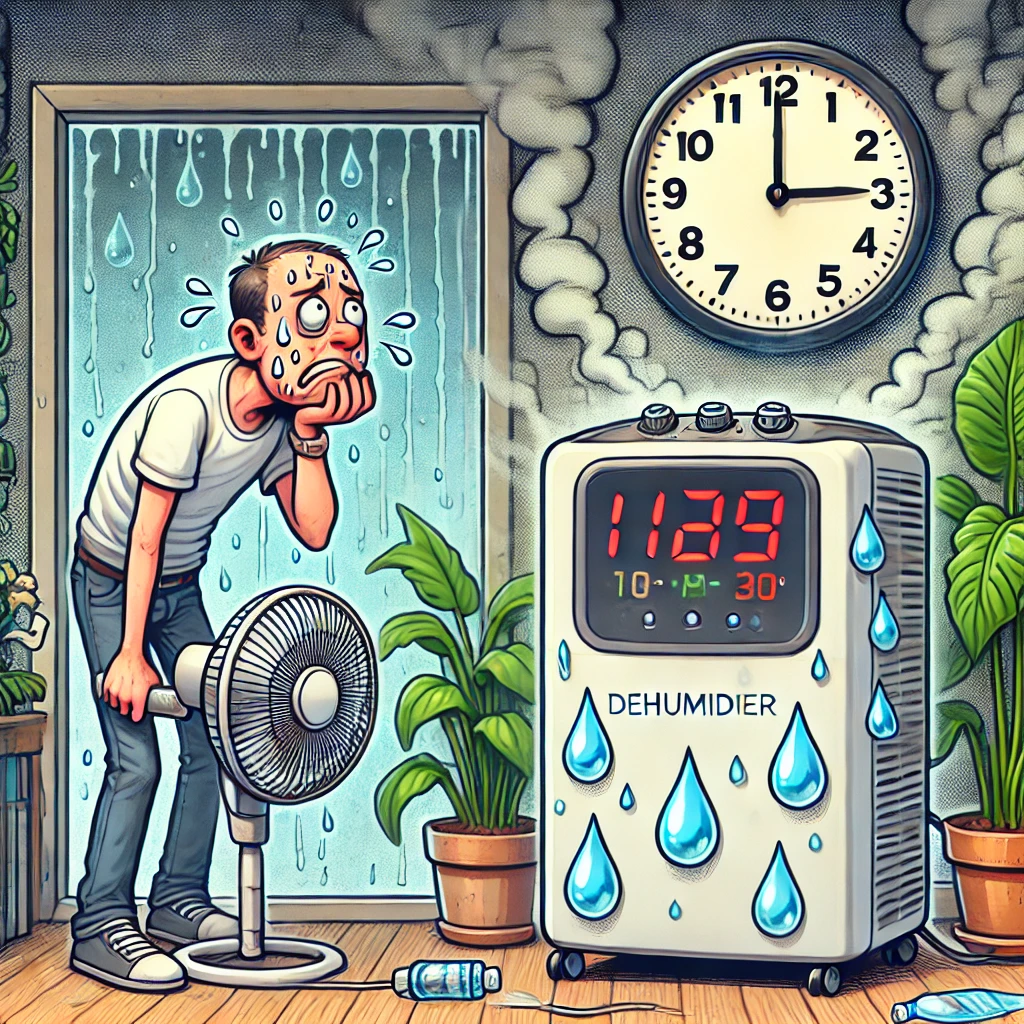Humidity can make your home feel uncomfortable and encourage mold, mildew, and dust mites. Reducing moisture levels not only improves comfort but also protects your property from potential damage. But how long does it take to get the humidity out of your house? Let’s explore the factors involved and provide practical tips for faster results.
How Long Does It Take to Lower Humidity Levels?
The time it takes to reduce humidity depends on several variables, including the source of the moisture, the efficiency of your HVAC system, the outdoor humidity, and the tools you use. Typically:
- Mild humidity issues: It can take a few hours to see a noticeable drop in humidity levels if dehumidifiers and AC units are working effectively.
- Moderate issues (e.g., damp rooms after rain): This may require 24-48 hours.
- Severe moisture problems (such as water intrusion): It could take several days or even weeks, especially if walls or floors are saturated.
Factors That Impact Humidity Removal Time
1. Indoor Temperature and Ventilation
Warm air holds more moisture. If your HVAC system isn’t working efficiently, it may take longer to control humidity. Proper ventilation (like exhaust fans) speeds up moisture removal, especially in areas such as bathrooms and kitchens.
2. Type and Size of Dehumidifier
A high-capacity dehumidifier can make a difference within hours, especially in small or medium rooms. Larger spaces may need more time or multiple units.
3. Sealed Windows and Doors
Humidity can linger longer in homes with air leaks. Weather-stripping doors and caulking windows helps prevent outdoor humidity from entering.
4. Source of Moisture
If the humidity is due to seasonal changes, running your AC and dehumidifiers may be enough to restore balance within a few hours. However, hidden leaks or plumbing issues require repairs first, which will extend the time needed to fix the problem.
Best Practices to Speed Up Humidity Removal
- Run your air conditioner.
Air conditioning cools the air and removes moisture simultaneously. Use it regularly during humid seasons. - Use a dehumidifier.
Place a dehumidifier in problem areas like basements or bedrooms to keep the humidity under control. - Improve ventilation.
Turn on bathroom and kitchen exhaust fans to vent moisture outside. Open windows if the outdoor humidity is lower than indoors. - Dry wet surfaces immediately.
Mop up spills or condensation to prevent further moisture buildup. - Monitor with a hygrometer.
Check your home’s humidity levels regularly. Aim for 30-50% relative humidity for maximum comfort.
How Can You Tell When the Humidity Is Gone?
- No musty odors: Reduced moisture levels will stop mold and mildew smells.
- Comfortable air: The air will feel cooler, lighter, and less sticky.
- Hygrometer reading: A reading of 30-50% humidity indicates balanced indoor air.
From My Experience
In my years as an HVAC expert, I’ve found that persistent humidity issues are often caused by hidden leaks or undersized air conditioning units. If your house still feels humid after 48 hours of running your AC and dehumidifiers, it may be time to inspect for air leaks or call a professional.
Conclusion
The time it takes to remove humidity from your house depends on various factors like moisture sources, equipment used, and ventilation quality. With the right tools—such as air conditioning, dehumidifiers, and exhaust fans—you can restore comfort in just a few hours to a couple of days. Regular monitoring and addressing moisture sources are essential to maintaining ideal humidity levels.
By following these steps, you’ll stay ahead of humidity problems and enjoy a comfortable, moisture-free home. If persistent humidity issues remain, it might be worth consulting an HVAC professional to inspect your system or check for hidden issues.
